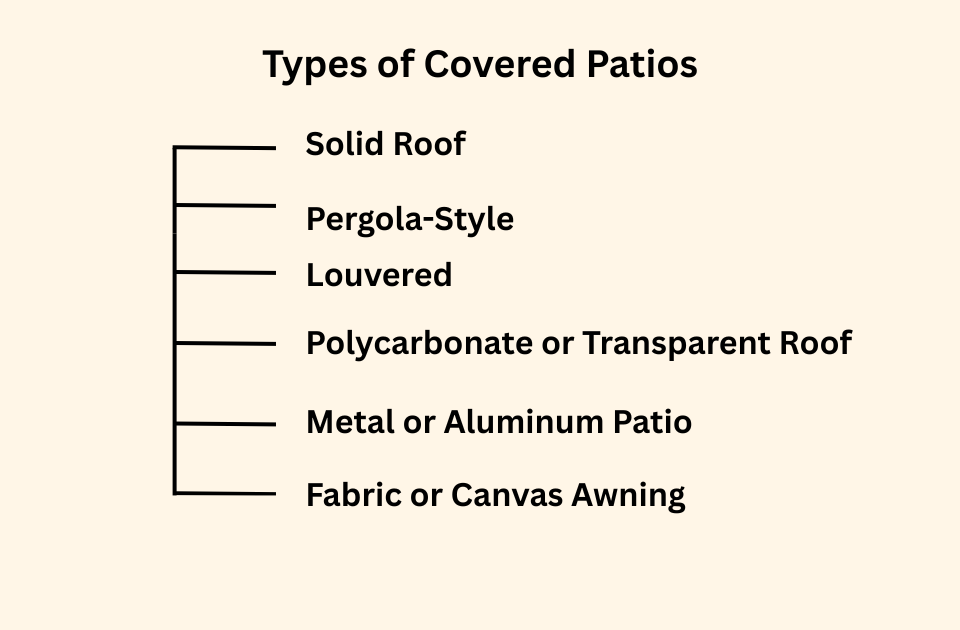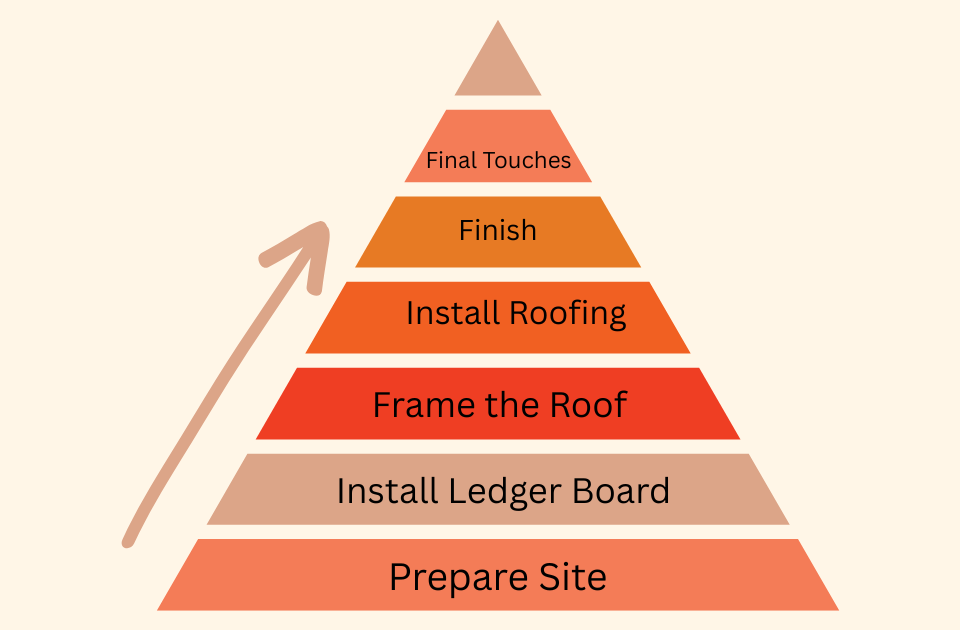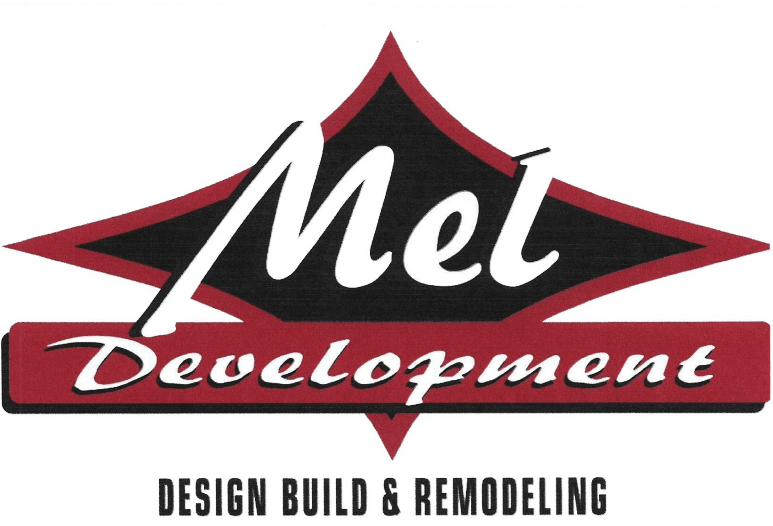The addition of a covered patio to your house will totally change the outdoor area and make it an extremely comfortable living space. The patio will serve for rain, sun, and wind protection, so it will be functional during the whole year.
A nicely designed and built covering will not only add value to your home but also give a smooth transition between inside and outside. Let’s learn how to build a covered patio step by step that integrates smart design, the best materials, enhanced choice, and smooth construction.
Why You Should Build a Covered Patio

The best covered patios offer shelter for outdoor furniture, extended living space, and boost the outdoor view of the house. Whenever you build a cover over a patio, that means you want to protect the patio area from the sun, rain, and wind for the whole year. A well-constructed cover can not only increase the value of the house but also provide a smooth transition from indoors to outdoors.
Planning Your Attached Patio Cover

You must follow these points very carefully before starting your construction work for the covered patio:
- Start by making very accurate measurements and finding out the way the structure will be attached to the wall of the house.
- Review the local building codes and apply for the necessary permit because usually, an attached patio cover will require a ledger board attachment and structure approval.
- Choose the materials according to your budget and style, which you want. For example, wood gives a warm feel and is customizable, metal or aluminum is easy to maintain, and composite panels provide light transmission and UV protection.
- Think about the slope of the roof not only for proper water drainage but also for structural loads, which is very important if you live in an area where heavy rain and snow are common weather.
If you spend enough time to plan your project, the build will start on a solid foundation.
Types of Covered Patios and Their Impact

If you want to make a covered patio, it is very important to understand the styles and materials that are available. All the types of covered patios not only change the look and usability of your outdoor space but also influence the cost of building a covered patio. Below are the most common options:
Type 1. Solid Roof Covered Patio
A solid roof structure can be built using shingles, metal sheets, or insulated panels.
- Best for: Full shade, strong protection from rain, and year-round use.
- Pros: Durable, easily integrated with the home’s roof, protects furniture.
- Cons: Generally higher price due to roofing materials and framing.
- Impact on cost: This is generally the most expensive type due to roofing and structural load requirements.
Type 2. Pergola-Style Covered Patio
While pergola installations make use of rafters or slatted beams, they do provide filtered sunlight rather than full shade.
- Best for: Decorative look, light shade, and growing plants.
- Pros: Stylish, customizable, and cheaper than pitched roofs.
- Cons: Not completely weatherproof.
- Impact on cost: Depending on the type of wood and the complexity of the design, building this type of covered patio can be quite expensive.
Type 3. Louvered Covered Patio
This modern option uses louvers that can be adjusted to open and close for total control over light and ventilation.
- Best for: Premium outdoor areas where flexibility is essential.
- Pros: Adjustable shading, can be motorized, high-end look.
- Cons: Expensive installation and electrical parts.
- Impact on cost: Usually higher, especially for motorized aluminum systems.
Type 4. Polycarbonate or Transparent Roof Covered Patio
These are made from either clear or tinted polycarbonate panels that allow natural light to pass through while blocking UV rays.
- Best for: Spaces that need light without heat or rain.
- Pros: Lightweight, inexpensive, and easy to install.
- Cons: Less aesthetically pleasing than wood or shingles; may scratch over time.
- Impact on cost: Low to medium, making it a budget-friendly option.
Type 5. Metal or Aluminum Patio Covered Patio
A complete aluminum or steel cover is very reliable, durable, and requires minimal maintenance.
- Best for: Modern homes and low-maintenance outdoor spaces.
- Pros: Weather-resistant, termite-proof, and clean finish.
- Cons: May retain heat and have limited customization compared to wood.
- Impact on cost: Mid-range, depending on metal thickness and coating.
Type 6. Fabric or Canvas Awning-Covered Patio
Fabric covers are light, can be taken off whenever necessary, and are perfect for providing shade during the summer months only.
- Best for: Quick shade, rentals, or flexible outdoor spaces.
- Pros: Inexpensive, easy to install, lots of colors.
- Cons: Not designed for inclement weather and requires regular cleaning.
- Impact on cost: These types of covered patios are the most cost-effective to build, as they require minimal materials and labor.
Steps of DIY Covered Patio

Before installing a covered patio, it is recommended to read the DIY Safety Guide for personal safety. After that, you can follow these steps to know how to build a covered deck or a patio that is attached:
Step 1. Prepare the Site
Get rid of the plants, level the ground, and check the condition of the existing patio slab or deck structure. If you are going to build a new slab, then dig the foundation footings.
Step 2. Install Ledger Board and Supports
Attach a ledger board securely to the house, using flashing that works for proper water infiltration. After that, set the posts and beams structure at the outer edge away from the house.
Step 3. Frame the Roof Structure
Make the beam and rafter framework, add diagonal bracing, and verify the local building codes for proper spacing and span.
Step 4. Install Roofing Material
Add roof decking, roofing underlayment, and your final roof covering (such as shingles, metal panels, or polycarbonate). Check for the right slope and proper installation of the flashing at the house interface.
Step 5. Finish and Weatherproof
install fascia, trim, and gutters if needed, and caulk joints. Apply sealant or stain to wood surfaces and check the structure for any gaps or weaknesses.
Step 6. Add Decking or Surface and Final Touches
You can add decking, paving, or concrete to build an outdoor patio surface and then connect lighting, fans, or outdoor furniture to complete your outdoor living space.
Key challenges and best practices to build a covered patio
- Choose a slope of at least ¼ inch per foot (≈ 2 cm per meter) for the roof to ensure better water drainage.
- When it comes to the assembly of the house, ensure that your present structure has the capacity to bear the weight. If you are in doubt about it, then consult a structural engineer.
- If you are choosing wood, regularly maintain finishes for an extended lifespan, select pressure-treated or naturally durable timber species, such as cedar.
- For covered and attached decks, ensure that the posts do not interfere with the existing patio areas and are anchored properly to eliminate any future movement also.
Conclusion
If you want to build a covered patio that is attached to your home and make a functional outdoor living space, start by making a solid plan. And, you can also get a cabana installed in your outdoor area by cabana contractors. When you want guidance from professionals or construction by them, Mel Development Inc. will be there to provide expert support to your patio project. Do not wait! Transform your outdoor space into a covered oasis.



